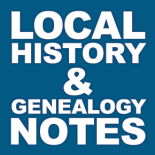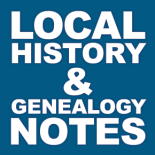
Now is the Time to Plan for the 100th Anniversary of Women's Suffrage
by Katherine Rinehart
January 30, 2019

Now is the Time to Plan for the 100th Anniversary of Women's Suffrage
The year 2020 marks the 100th Anniversary of the passage of the 19th Amendment, guaranteeing and protecting women's constitutional right to vote. This historic centennial offers an unparalleled opportunity to commemorate a milestone in democracy and explore its relevance to the issues of equal rights today.
At the Sonoma County History & Genealogy Library, in partnership with National Women's History Alliance, we're working with a team of volunteers to document those involved in the local suffrage movement as well as the sites where suffrage-related activities occurred. This research will feed into two related projects - a Votes for Women Trail Map and written biographical sketches that will be submitted to a national online biographical database managed by the Center for the Historical Study of Women and Gender at Binghamton University in New York.
Volunteers and library staff are making exciting discoveries on a weekly basis. For example, we just learned that Carrie Chapman Catt (1859-1947), Iowa educator, two-time president of the National American Woman Suffrage Association (NAWSA) and founder of the League of Women Voters spoke to a large audience at the Petaluma Opera House on October 29, 1896. Mrs. Catt had been invited to speak by the Petaluma Political Equality Club and was introduced by club president, Ellen H. Button. Mrs. Button, a native of Vermont, came to Petaluma with her husband Isaac V. Button in 1861 at the age of 22. In 1870, she was the treasurer of the Sonoma County Woman Suffrage Association, when she signed her name to a petition for women's suffrage that was sent to the California legislature. Mrs. Ellen H. Button was one of 398 Petaluma residents to sign the petition.
Many of those listed on that 1870 petition, including Ellen H. Button, continued to work on behalf of the suffrage cause for years. Thanks to the fact that a number of local newspapers are available digitally, determining the level of their involvement is much easier than it would have been in the past. Newspapers research is so important because these individuals are not often found in secondary sources and if they are their work on behalf of suffrage is often overlooked.